BloostonLaw Telecom Update Published by the Law Offices of Blooston, Mordkofsky, Dickens, Duffy & Prendergast, LLP [Selected portions reproduced here with the firm's permission.] www.bloostonlaw.com | Vol. 11, No. 12 | March 26, 2008 |
D Block “De-linked” From Auction No. 73 The FCC has “de-linked” the unsold D Block private/ public partnership license from Auction No. 73 and determined that this license will not be re-offered in Auction No. 76. (Auction 76, in fact, will not be conducted—see separate story on this page.) The 700 MHz Public Safety/Private Partnership was designed to achieve the public policy goal of helping to solve public safety’s interoperability problems and allow police, fire, and other first responders to better communicate with one another in times of emergency. But the 10 MHz D Block license drew only a single $472 million bid from Qualcomm, which did not meet the FCC’s $1.3 billion reserve price. Further, Frontline Wireless, which was expected to bid on the D Block, did not participate in the auction at all because it was unable to secure financing to make its upfront payment (BloostonLaw Telecom Update, January 9). The FCC will now consider its options with respect to the D Block. As Commissioner Jonathan Adelstein put it in a separate statement: “As we approach reworking the rules for this critical spectrum, we must keep the needs of public safety foremost in our priorities. We need to coordinate with members of Congress, who worked long and hard to craft this digital television transition specifically to provide public safety with urgently needed spectrum. I am hopeful we can build on the tragic lessons of the last auction to make it work for public safety in the next.” BloostonLaw contacts: Hal Mordkofsky, John Prendergast, Cary Mitchell, and Bob Jackson. AT OUR DEADLINE: RCR and Reuters report that the U.S. Court of Appeals for the District of Columbia Circuit has stayed the FCC’s Phase II, E911 location accuracy rules. In granting the motions for stay filed by T-Mobile and the Rural Cellular Association, the Court said it need not reach the substantive issues because of the FCC order’s procedural irregularities. The FCC recently stayed the rules until March 11, 2009 (BloostonLaw Telecom Update, March 19). FCC Announces Auction 73 Winners; Down Payments, Forms 601, 602 Due April 3 The FCC last week released its Auction No. 73 closing Public Notice, identifying winning bidders and noting that there were 1,090 provisionally winning bids covering 1,091 licenses and totaling $19,592,420,000. The Commission conducted Auction 73 using procedures for anonymous bidding, package bidding for select licenses, and block-specific aggregate reserve prices. The provisionally winning bids for the A, B, C, and E Block licenses exceeded the aggregate reserve prices for those blocks. The provisionally winning bid for the D Block license, however, did not meet the applicable reserve price and thus did not become a winning bid (see separate story on this page). Accordingly, Auction 73 raised a total of $19,120,378,000 in gross winning bids and $18,957,582,150 in net winning bids (reflecting bidders’ claimed bidding credit eligibility). In total, 101 winning bidders won a total of 1,090 licenses. Based on the results of Auction 73, the FCC said, the contingent, subsequent auction designated as Auction 76 is not necessary with respect to licenses for the A, B, C, and E Blocks. In addition, as directed by the Commission, the D Block license will not be re-offered immediately in Auction 76. Accordingly, Auction 76 will not be conducted. Since Auction 76 will not be held, the anti-collusion rule period ends at 6:00 p.m. ET on April 3, 2008. By 6:00 p.m. Eastern Time (ET) on April 3, 2008, winning bidders in Auction 73 must have on deposit with Mellon Bank in Pittsburgh, Pennsylvania, enough funds to cover down payments on winning bids. Specifically, each winning bidder’s total deposit must be 20% of the net amount of its winning bids. If a winning bidder’s upfront payment is not sufficient to meet this requirement, the winning bidder must deposit additional funds to meet its required down payment. Note: All payments must be via wire transfer. Each winning bidder will be required to submit the balance of the net amount of its winning bids by April 17, 2008. All winning bidders, including those winning bidders that apply for a tribal lands bidding credit, must pay the full amount by 6:00 p.m. ET on April 17, 2008, (or by 6:00 p.m. ET on May 1, 2008, along with the 5% late fee required by Section 1.2109(a) of the Commission’s rules). Full and timely payment of winning bids and any applicable late fees must be made in accordance with Section 1.2109(a) of the Commission’s rules and must occur before action will be taken upon a winning bidder’s long-form application (FCC Form 601). Specifically, licenses will be granted only after the full and timely payment of winning bids and any applicable late fees, in accordance with Section 1.2109(a). Wire transfers of final payments must be received by Mellon Bank by 6:00 p.m. ET on April 17, 2008, (or by 6:00 p.m. ET on May 1, 2008, along with the five percent late fee required by Section 1.2109(a) of the Commission’s rules). A winning bidder should coordinate with its financial institution ahead of time regarding its wire transfer and allow sufficient time for the wire transfer to be initiated and completed prior to the deadline. Prior to 6:00 p.m. ET on April 3, 2008, each winning bidder must submit electronically a properly completed long-form application (FCC Form 601) for all licenses for which it was the winning bidder in Auction 73, and a current FCC Form 602 reporting the applicant’s complete and accurate ownership information. Because of the complexity of the long-form (Form 601) and ownership application (Form 602), clients should refer to the FCC’s Public Notice and consult with counsel. Auction Notes: Verizon Wireless and AT&T Wireless together accounted for 80% of the bids made (approximately $16 billion of the $19.6 billion) in Auction 73. Google, which did not win any licenses, was nevertheless pleased that the auction resulted in the mandatory use of the FCC’s “open access” rule. Generally, this “wireless Carterfone” rule allows users to bring their own devices to the C Block spectrum. FCC Chairman Kevin Martin said that “a bidder other than a nationwide incumbent won a license in every market. As a result of the 700 MHz Auction, there is the potential for an additional wireless ‘third-pipe’ in every market across the nation. Additionally, 99 bidders, other than the nationwide wireless incumbents, won 754 licenses – representing approximately 69 percent of the 1090 licenses sold in the 700 MHz auction. The Auction therefore drew wide-ranging interest from a number of new players. For example, Frontier Wireless LLC (EchoStar), which is widely viewed as a new entrant, won 168 licenses in the E block to establish a near nationwide footprint for its services for consumers.” The Chairman added that “non-nationwide incumbents showed significant interest in rural areas as well. 75 new players won licenses to serve 305 rural areas of the country (428 Rural Service Area licenses in total). Winners in these markets will provide increased access to broadband and greater choice in wireless service for consumers living in rural areas.” But Commissioner Jonathan Adelstein noted that “preliminary FCC data regarding winning bidders in the 700 MHz auction indicated that, based on self-reporting, women-owned bidders failed to win any licenses and minority-owned bidders won less than 1% of licenses (7 of 1,090 licenses, or .064%), despite the fact that women constitute over half the U.S. population and minorities around one-third of the U.S. population.” He said, “Here we had an enormous opportunity to open the airwaves to a new generation that reflects the diversity of America, and instead we just made a bad situation even worse. This gives whole new meaning to “white spaces” in the spectrum.” BloostonLaw contacts: Hal Mordkofsky, John Prendergast, Cary Mitchell, and Bob Jackson. FCC MODIFIES PCS, AWS POWER LIMIT RULES: The FCC has modified its rules governing Broadband Personal Communications Services (PCS) and Advanced Wireless Services (AWS-1) to permit the use of a power spectral density model (PSD) when measuring and calculating emissions and power limits. This action is consistent with the FCC’s April 2007 decision to allow a PSD model in the commercial services portions of the 700 MHz Band. The FCC said the new rule changes offer greater flexibility to PCS and AWS-1 operators, are more technologically neutral, and will better accommodate broadband technologies. The Commission added that the PSD model also has the potential to reduce network infrastructure costs, thus enabling providers to offer enhanced wireless broadband services, including to consumers living in rural America. The existing PCS and AWS-1 rules measure radiated power in terms of watts per emission and limit power output regardless of bandwidth size. In the PSD model, radiated power levels are calculated on a watts-per-megahertz basis when operating with greater than one megahertz of bandwidth. In addition, the FCC said, under the existing rules, power levels are measured using peak values, while under the new rules, power levels may now be measured using average values. The Commission said this is a more practical way to measure power levels and will accommodate new wireless technologies that produce emissions with sub-microsecond power spikes. In order to prevent interference that may occur from measuring average power levels, the FCC adopted a peak-to-average ratio limit of 13 dB. In the Order, the FCC declined to adopt a proposal to double the base station effective isotropic radiated power limits for PCS and AWS-1 licensees. This proposal raised significant concerns regarding potential harmful interference to operators in adjacent spectrum bands. The FCC also declined to change radiated power limit rules for other services besides PCS and AWS-1 at this time. BloostonLaw contacts: Hal Mordkofsky, John Prendergast, and Cary Mitchell. FCC REVISES METHODOLGY FOR COLLECTING BROADBAND DATA: The FCC, at last week’s open meeting, adopted an order to increase the precision and quality of broadband subscribership data collected every six months from broadband services providers in FCC Form 477 (Local Competition and Broadband Reporting Form) that is included in the Commission’s annual Communications Act Section 706 Report. Improvements include collecting detailed subscribership information on a local level and more detailed information about the speed of broadband service. Specifically, the Order will: - Expand the number of broadband reporting speed tiers to capture more precise information about upload and download broadband speeds in the marketplace
- Require broadband providers to report numbers of broadband subscribers by Census Tract, broken down by speed tier and technology type
- Improve the accuracy of information the Commission gathers about mobile wireless broadband deployment.
Also, in a Further Notice of Proposed Rulemaking (FNPRM), the FCC seeks comment on broadband service pricing and availability. Separately, the FCC adopted a report showing that broadband services are currently being deployed to all Americans in a reasonable and timely fashion. The Fifth Report to Congress on broadband deployment under Section 706 found that there have been considerable changes and advances in the delivery of broadband-based services and applications since the Fourth Report. BloostonLaw contacts: Hal Mordkofsky, Ben Dickens, Gerry Duffy, and John Prendergast. FCC ANNOUNCES “CLOSED” AUCTION 77, SCHEDULED TO BEGIN JUNE 17: The FCC has announced Auction No. 77, a closed auction of licenses to provide cellular service in two different unserved areas scheduled to commence on June 17, 2008. The spectrum to be auctioned is the subject of two groups of pending mutually exclusive long-form applications on FCC Form 601 for unserved area licenses in the Cellular Radiotelephone Service. Participation in Auction 77 will be limited to Chama Wireless and E.N.M.R. Telephone Cooperative (Channel Block A), and Keystone Wireless and Verizon Wireless (Channel Block B). The winning bidder in each group will be licensed to serve only the unserved area proposed in its long-form application(s) for that MX Group. In Channel Block A, ENMR has filed two applications that propose different Cellular Geographic Service Areas (CGSAs). ENMR was required by the Commission’s rules to file two separate applications for these CGSAs. Because ENMR’s applications are not mutually exclusive with each other, but each of these applications is mutually exclusive with the competing applicant in the MX Group, if ENMR qualifies to bid in the auction, it will submit one bid for the opportunity to have both of its applications processed in the event that it is the winning bidder in Channel Block A. The FCC also requests comment on competitive bidding procedures for Auction 77. Comments in this AU Docket No. 08-32 proceeding are due April 4, and replies are due April 11. BloostonLaw contacts: Hal Mordkofsky, John Prendergast, Cary Mitchell, and Bob Jackson. NTIA RELEASES FEDERAL STRATEGIC SPECTRUM PLAN: The Commerce Department's National Telecommunications and Information Administration (NTIA) today released a comprehensive report on the use of the nation’s airwaves used by the U.S. federal government, based on submissions of spectrum plans from 15 Federal agencies. The report titled, The Federal Strategic Spectrum Plan, is a key component of President Bush’s 21st Century Spectrum Policy Initiative for improving the management of spectrum by federal agencies. “The plan provides transparency on how the federal government uses the nation’s airwaves and provides the framework for the National Spectrum Plan to be completed with the Federal Communications Commission,” said Acting Assistant Secretary Meredith Baker. The report provides extensive data on federal spectrum use and plans, including frequency bands, radio-communication services, and spectrum-dependent systems. Among several recommendations provided in the report, federal agencies should over the next five years: (1) use commercial services where feasible; (2) implement “smart” radio technologies to improve more dynamic access to needed frequencies, wherever and whenever needed; (3) work with NTIA on identifying economic and other incentives to promote more efficient use of spectrum; (4) facilitate sharing among federal users and between federal and non-federal users; (5) improve interoperability among public safety agencies; and (6) ensure spectrum support for continuity of government operations.
Within the five-year timeframe, NTIA will upgrade the federal spectrum management system; consider possible user fees for federal use of spectrum; develop improved interference models for optimizing spectrum use; implement methods to better forecast future requirements; and continue to promote interagency and federal/private sector coordination. The plan was formulated using the agency-specific strategic spectrum plans from 15 agencies: the Departments of Agriculture; Commerce; Defense; Energy; Homeland Security; Interior; Justice; State; Transportation; Treasury; and Veterans Affairs; the United States Postal Service; the Broadcasting Board of Governors; the National Aeronautics and Space Administration; and the National Science Foundation.
BloostonLaw contacts: Hal Mordkofsky and John Prendergast. |














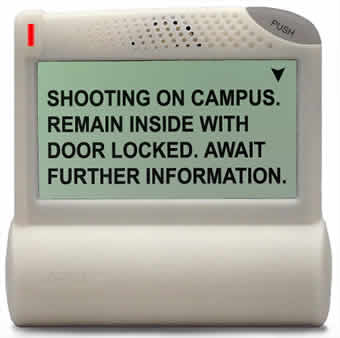

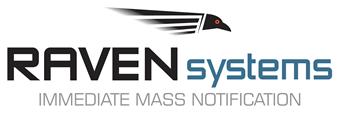

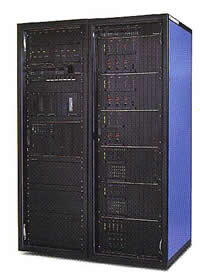
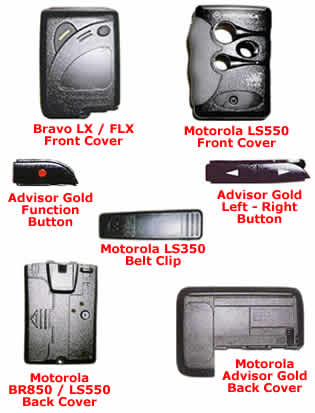

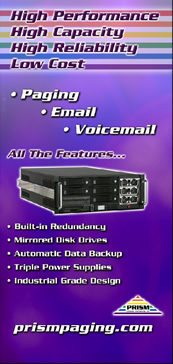



 Some people who send an excessive amount of text messages and e-mails may have a mental illness, according to new American experts.
Some people who send an excessive amount of text messages and e-mails may have a mental illness, according to new American experts. 
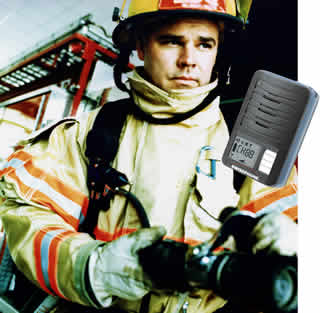
 Stopwatch
Stopwatch 
 In
In 
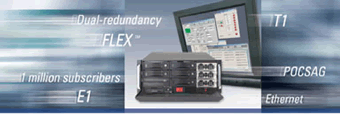



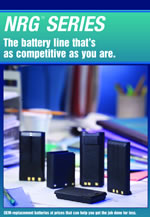


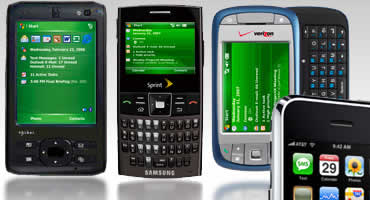



 ATM300
ATM300 










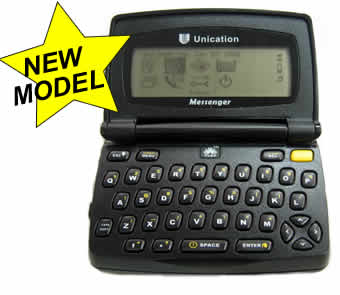








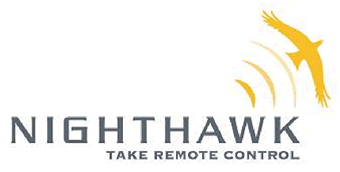





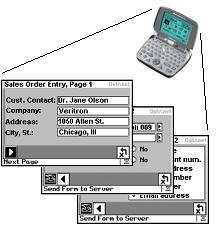 If you see someone in the field (like salespeople, technicians, and delivery people) using paper forms, their company could probably save a pile of money, and get much better timeliness, accuracy and efficiency, by using converting to Outr.Net's Wireless Forms. Custom applications for as little as $995, delivered in just a few days.Outr.Net has a web page on Wireless Forms for Timeports at:
If you see someone in the field (like salespeople, technicians, and delivery people) using paper forms, their company could probably save a pile of money, and get much better timeliness, accuracy and efficiency, by using converting to Outr.Net's Wireless Forms. Custom applications for as little as $995, delivered in just a few days.Outr.Net has a web page on Wireless Forms for Timeports at: 



